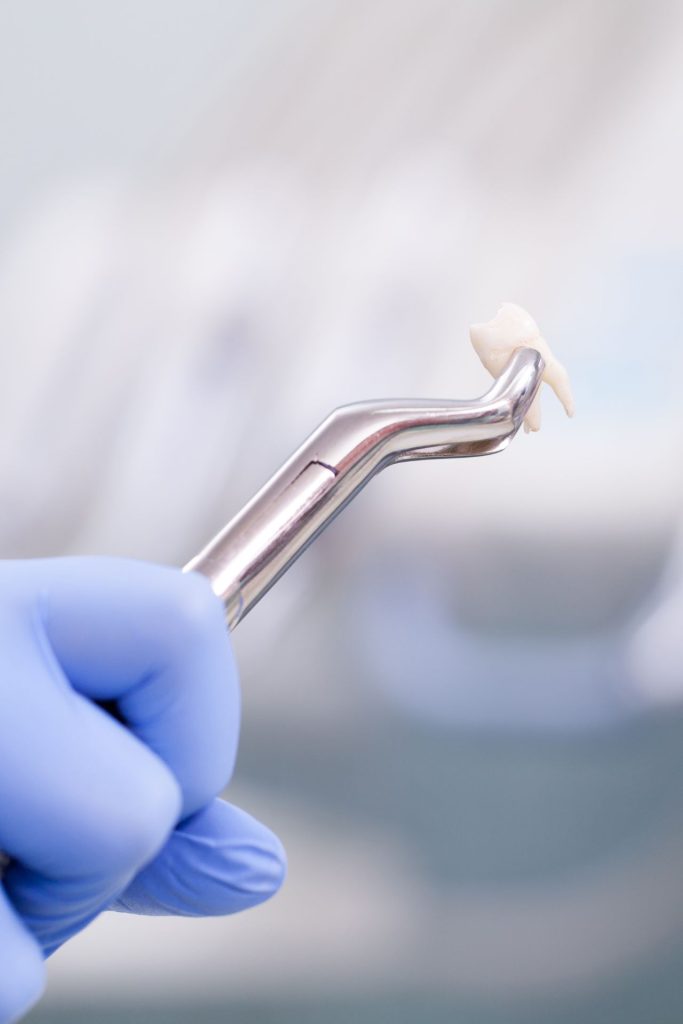
A crowded mouth. Sometimes dentists pull teeth to prepare the mouth for orthodontia. The goal of orthodontia is to properly align the teeth, which may not be possible if your teeth are too big for your mouth.
Infection. If tooth decay or damage extends to the pulp — the center of the tooth containing nerves and blood vessels — bacteria in the mouth can enter the pulp, leading to infection. Often this can be corrected with root canal therapy (RCT), but if the infection is so severe that antibiotics or RCT do not cure it, extraction may be needed to prevent the spread of infection.
Periodontal (Gum) Disease. If periodontal disease — an infection of the tissues and bones that surround and support the teeth — have caused loosening of the teeth, it may be necessary to the pull the tooth or teeth.
Recovery typically takes a few days. The following can help minimize discomfort, reduce the risk of infection, and speed recovery.



Deep dental cleaning is also called periodontal scaling and root planning, or SRP. It’s similar to how a hygienist typically cleans your teeth but focuses on the outer surface of the roots and below your gum line. This special cleaning is needed when tartar buildup has caused infection of the gums. Pockets form, a widening of the gumline that has pulled away from the tooth. Loss of this connective tissue can lead to bone loss and, eventually, tooth loss.
Deep dental cleaning will control the infection and promote healing. As you may know, preventing infection and inflammation anywhere in your body—including your gums—is important to heart health and may help you live longer.
You may notice some signs of infection requiring deep dental cleaning. Your gums may look red and swollen. They may be tender and bleed a little when you brush or floss. Or your teeth may appear longer than they used to—a sign that your gums are pulling away. Your dentist will diagnose the problem by measuring any pockets that have formed with a special probe. This test is usually painless. Your dentist may also take x-rays to check for bone loss. If pockets are deeper than can be treated with a standard cleaning and good at-home care, you will need deep cleaning to clear the infection and promote healing. You may need scaling and planning in just a few spots or the problem may be widespread.
After your deep cleaning procedure, we will give you homecare instructions based on your situation. You’ll likely be given an appointment 4-6 weeks later to check on your condition. Dr. Medwed may also ask you to come in for more frequent (regular) cleanings, perhaps every 3 months instead of twice yearly, for a time. This is to prevent new infection and promote healing. We’ll continue to measure pocketing to determine whether your gums are improving.

Poor oral hygiene allows bacteria living in the dental plaque to thrive, causing inflammation and tenderness in gums. During this first stage of gum disease called gingivitis, gums swell slightly and bleed easily. The most severe form of gum disease is periodontitis. It develops when bacteria and the toxins produced by the plaque bacteria infect the gums, invade below the gum line and infect tissue beneath the teeth. At this late stage, the infection breaks down the bone and tissues that keep teeth in place. Left untreated, the destruction continues until the teeth become loose from lack of support and eventually fall out. Periodontal disease is the most common cause for tooth loss in adults. However, periodontal surgery procedures are available, including bone grafts, that can help reverse some of the damage caused by periodontal disease.
Symptoms of Gum Disease:
Types of bone grafts differ depending on the material used:
Talk with Dr. Lauren Medwed to understand which type of graft would be best for your teeth.

